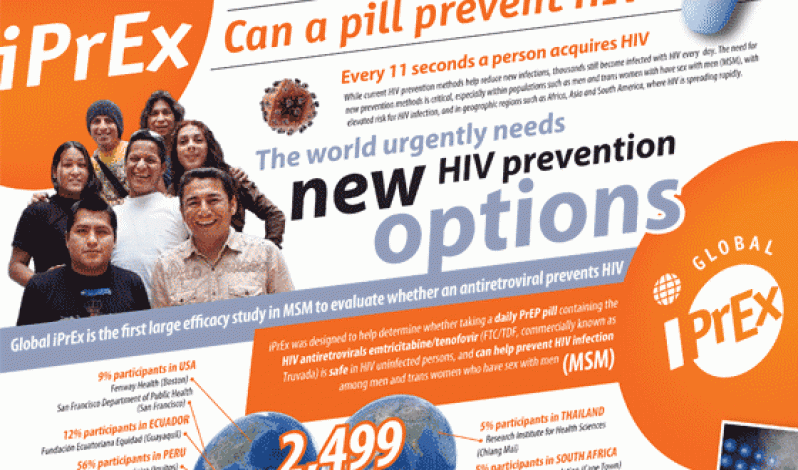Four doses of PrEP a week might be enough
-to prevent HIV infection
FURTHER analysis of another trial of pre-exposure prophylaxis (PrEP) suggests that the method might be effective when people take the drugs just four times a week.
All the research so far has been looking at people taking PrEP every day. The iPrEx trial asked gay men at risk of HIV infection to take a daily pill of Truvada (a combination of the anti-HIV drugs tenofovir and FTC) or a daily placebo. However, as in other trials, only a minority of participants actually took their pills as prescribed, seven days a week.
other trials, only a minority of participants actually took their pills as prescribed, seven days a week.
For the new analysis, researchers have examined drug levels in stored blood samples from participants who became infected, and from those who did not. Moreover, researchers have compared these with data from another study, which identified typical drug levels seen when a person has been observed taking tenofovir twice, four times, or seven times a week. They have used these data to estimate which levels of drug are protective of HIV infection.
Trial participants who were infected were estimated to have taken less than one dose of tenofovir a week. On average, those who remained uninfected had taken about three doses a week.
The researchers calculate that four doses of tenofovir per week reduced the risk of infection by around 96%.
This is an exploratory study that has some important limitations, but it does suggest that four doses of PrEP a week might be enough to prevent infection.
A separate study at the conference gives hope that a monthly injection could work as PrEP. In this preliminary research, 27 HIV-negative people were given a single injection containing the drug rilpivirine. This non-nucleoside reverse transcriptase inhibitor (NNRTI) is especially suitable for being turned into a long-lasting injectable form, because the daily dose of it required to suppress HIV is very small.
Over the course of 12 weeks, drug levels were then measured in blood, vaginal fluids, vaginal tissue, rectal fluids and rectal tissue. The levels observed are thought to be adequate to prevent HIV infection.
The participants complained of very few side-effects, apart from tenderness and swelling at the injection site.
Further, safety and drug-level studies will need to be conducted before effectiveness at preventing HIV infection can be tested. (AIDSMAP.com)
New study suggests…
SHARE THIS ARTICLE :
Facebook
Twitter
WhatsApp



.jpg)








